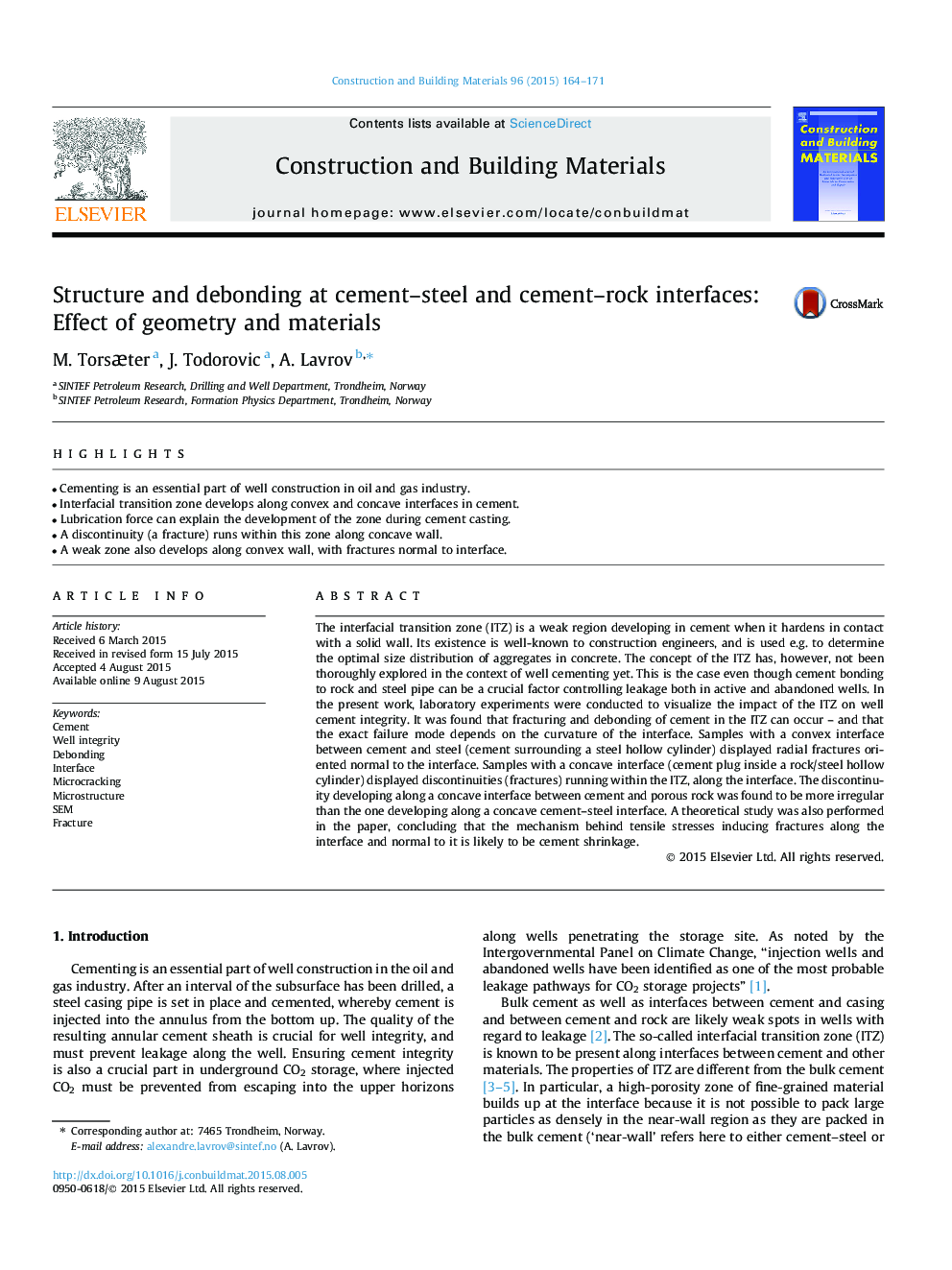| کد مقاله | کد نشریه | سال انتشار | مقاله انگلیسی | نسخه تمام متن |
|---|---|---|---|---|
| 256696 | 503561 | 2015 | 8 صفحه PDF | دانلود رایگان |
• Cementing is an essential part of well construction in oil and gas industry.
• Interfacial transition zone develops along convex and concave interfaces in cement.
• Lubrication force can explain the development of the zone during cement casting.
• A discontinuity (a fracture) runs within this zone along concave wall.
• A weak zone also develops along convex wall, with fractures normal to interface.
The interfacial transition zone (ITZ) is a weak region developing in cement when it hardens in contact with a solid wall. Its existence is well-known to construction engineers, and is used e.g. to determine the optimal size distribution of aggregates in concrete. The concept of the ITZ has, however, not been thoroughly explored in the context of well cementing yet. This is the case even though cement bonding to rock and steel pipe can be a crucial factor controlling leakage both in active and abandoned wells. In the present work, laboratory experiments were conducted to visualize the impact of the ITZ on well cement integrity. It was found that fracturing and debonding of cement in the ITZ can occur – and that the exact failure mode depends on the curvature of the interface. Samples with a convex interface between cement and steel (cement surrounding a steel hollow cylinder) displayed radial fractures oriented normal to the interface. Samples with a concave interface (cement plug inside a rock/steel hollow cylinder) displayed discontinuities (fractures) running within the ITZ, along the interface. The discontinuity developing along a concave interface between cement and porous rock was found to be more irregular than the one developing along a concave cement–steel interface. A theoretical study was also performed in the paper, concluding that the mechanism behind tensile stresses inducing fractures along the interface and normal to it is likely to be cement shrinkage.
Journal: Construction and Building Materials - Volume 96, 15 October 2015, Pages 164–171
